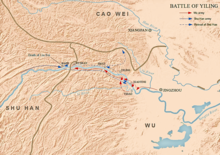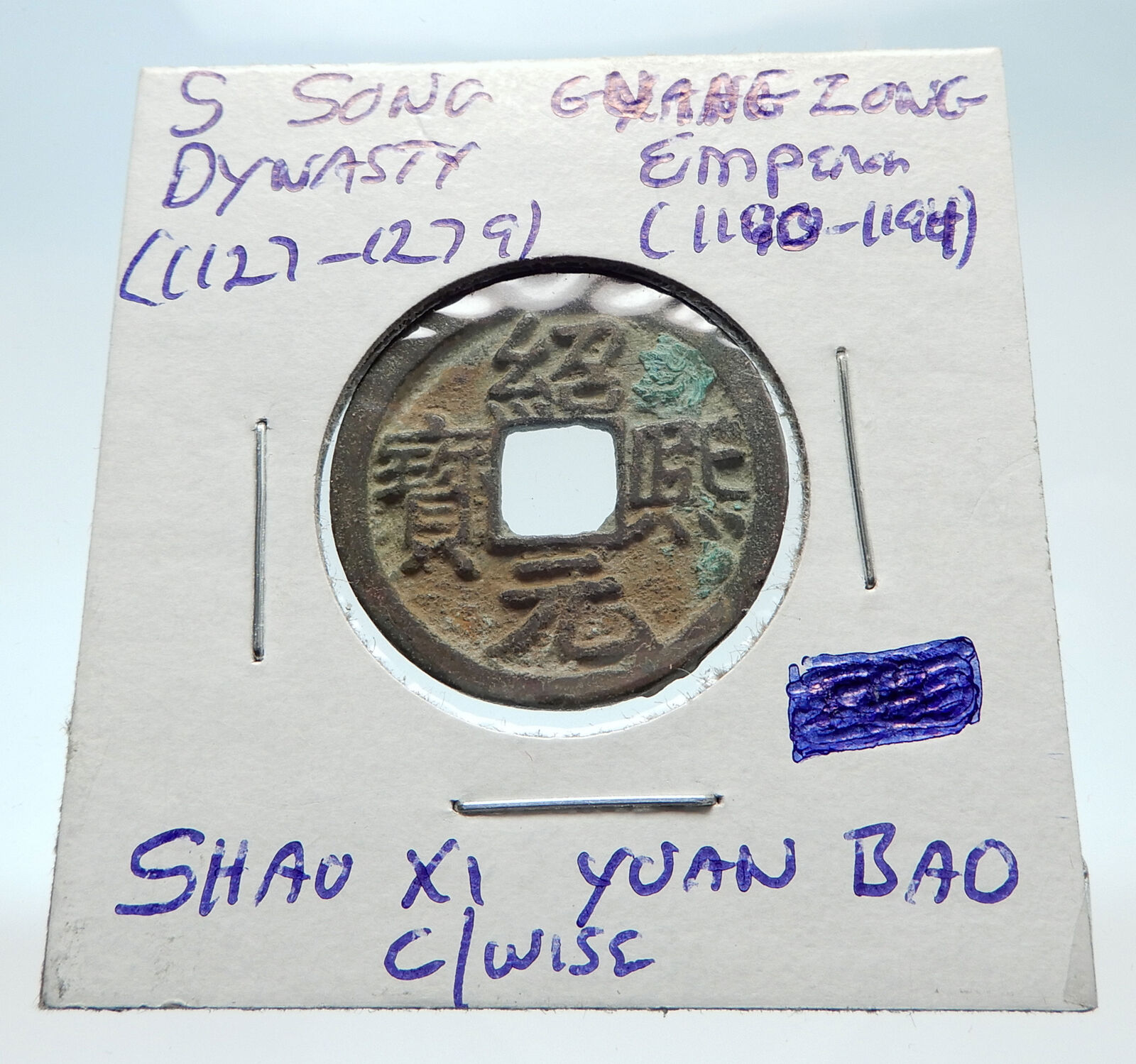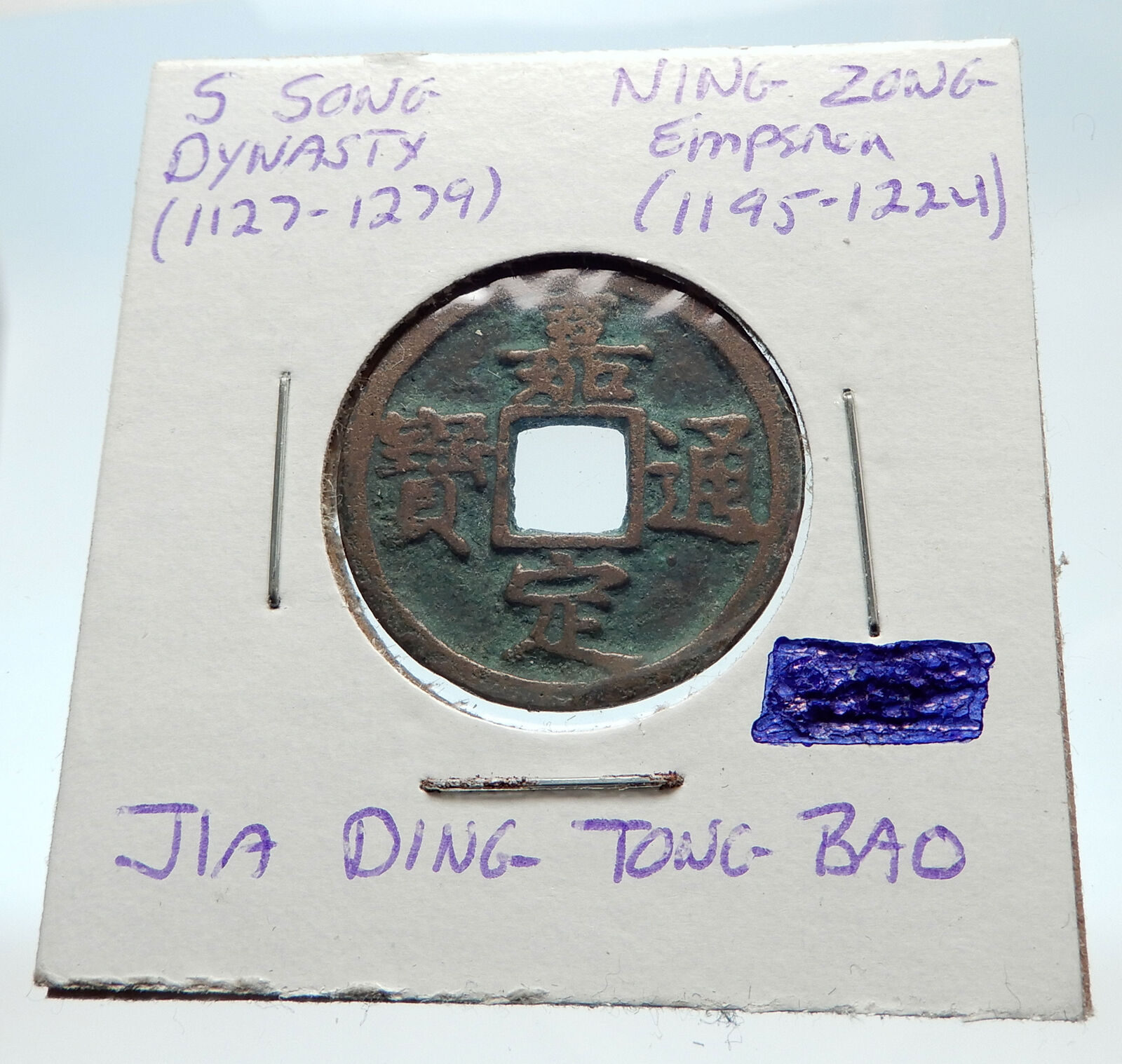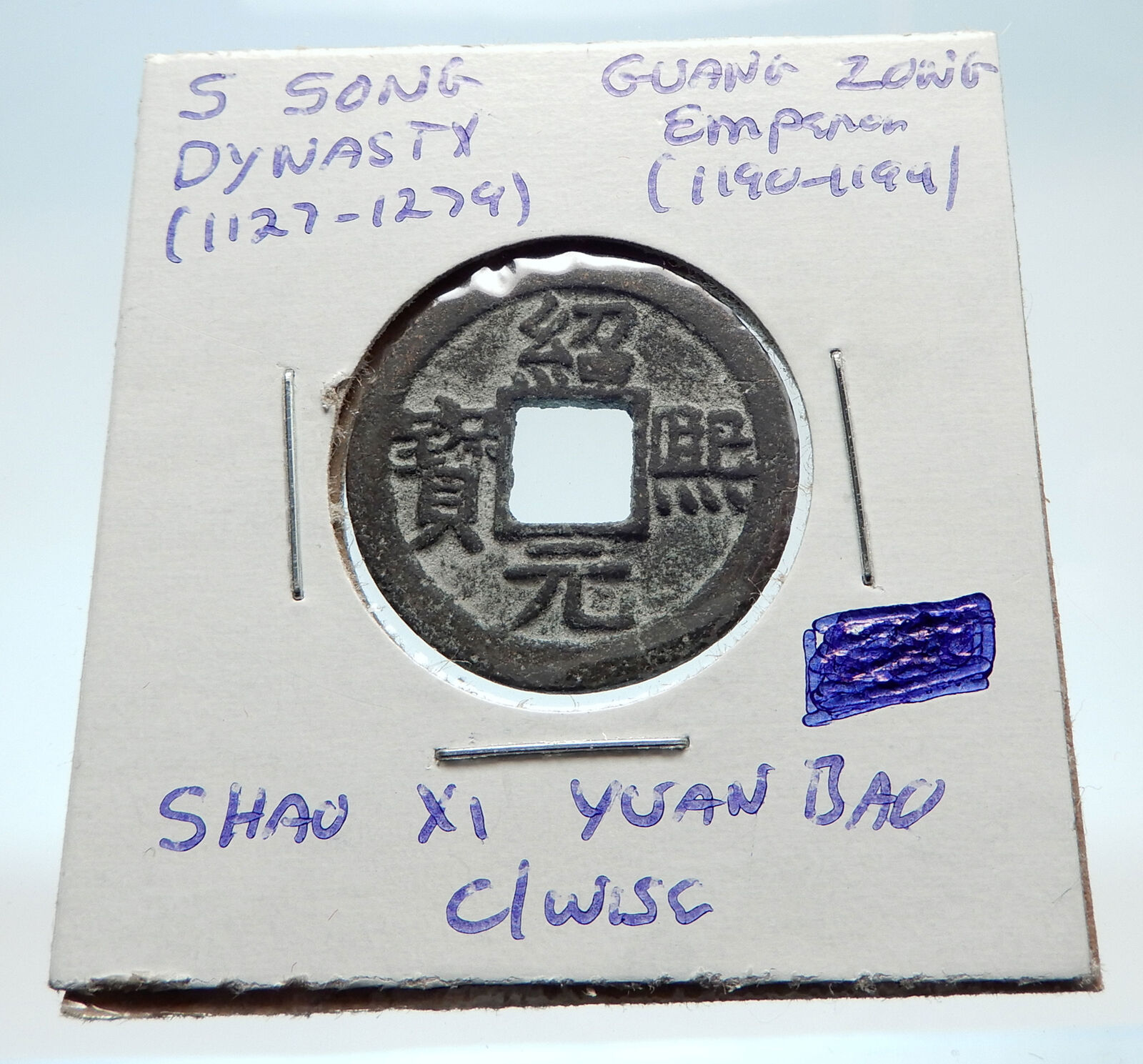|
China – Three Kingdoms of Liu Bei – Kingdom of Shu (220-265 AD)Bronze Tai Ping Bai Quan Cash Token 15.7mm, Struck 220-265 AD
Reference: H# 11.25
Chinese Symbols.
Goose Eye.
You are bidding on the exact item pictured, provided with a Certificate of Authenticity and Lifetime Guarantee of Authenticity.
 Shu: In 223, Liu Shan rose to the throne of Shu following his father’s defeat and death. From 224 to 225, during his southward campaigns, Zhuge Liang conquered the southern territories up to Lake Dian in Yunnan. Shu: In 223, Liu Shan rose to the throne of Shu following his father’s defeat and death. From 224 to 225, during his southward campaigns, Zhuge Liang conquered the southern territories up to Lake Dian in Yunnan.
In 227, Zhuge Liang transferred his main Shu armies to Hanzhong, and opened up the battle for the northwest with Wei. The next year, he ordered Zhao Yun to attack from Ji Gorge as a diversion while Zhuge himself led the main force to Mount Qi. The vanguard Ma Su suffered a tactical defeat at Jieting and the Shu army was forced to withdraw. In the next six years Zhuge Liang attempted several more offensives, but supply problems limited the capacity for success. In 234, he led his last great northern offensive, reaching the Battle of Wuzhang Plains south of the Wei River. Due to the death of Zhuge Liang in 234, the Shu army was forced once again to withdraw, but were pursued by Wei. The Shu forces began to withdraw; Sima Yi deduced Zhuge Liang’s demise and ordered an attack. Shu struck back almost immediately, causing Sima Yi to second guess and allow Shu to withdraw successfully.
After Zhuge Liang’s death, his position as chancellor fell to Jiang Wan, Fei Yi and Dong Yun, in that order. But after 258, Shu politics became increasingly controlled by the eunuch faction, led by Huang Hao, and corruption rose. Despite the energetic efforts of Jiang Wei, Zhuge Liang’s protégé, Shu was unable to secure any decisive achievement. In 263, Wei launched a three-pronged attack and the Shu army was forced into general retreat from Hanzhong. Jiang Wei hurriedly held a position at Jiange but he was outflanked by the Wei commander Deng Ai, who force-marched his army from Yinping through territory formerly considered impassable. By the winter of the year, the capital Chengdu fell due to the strategic invasion of Wei by Deng Ai who invaded Chengdu personally. The emperor Liu Shan thus surrendered. The state of Shu had come to an end after 43 years. Liu Shan was reinstated to the Wei capital of Luoyang and was given the new title of the “Duke of Anle”. Directly translated, it meant the “Duke of Safety and Happiness” and was a trivial position with no actual power.
The Three Kingdoms (simplified Chinese: 三国时代; traditional Chinese: 三國時代; pinyin: Sānguó Shídài) from 220 to 280 AD was the tripartite division of China among the states of Wei, Shu, and Wu. The Three Kingdoms period started with the end of the Han dynasty and was followed by the Jin dynasty. The short-lived Yan kingdom in the Liaodong Peninsula, which lasted from 237 to 238, is sometimes considered as a “4th kingdom”.
To distinguish the three states from other historical Chinese states of the same names, historians have added a relevant character to the state’s original name: the state that called itself “Wei” (魏) is also known as “Cao Wei” (曹魏), the state that called itself “Han” (漢) is also known as “Shu Han” (蜀漢) or just “Shu” (蜀), and the state that called itself “Wu” (吳) is also known as “Eastern Wu” (東吳; Dōng Wú) or “Sun Wu” (孫吳).
Academically, the period of the Three Kingdoms refers to the period between the foundation of the state of Wei in 220 AD and the conquest of the state of Wu by the Jin dynasty in 280. The earlier, “unofficial” part of the period, from 184 to 220, was marked by chaotic infighting between warlords in various parts of China. The middle part of the period, from 220 to 263, was marked by a more militarily stable arrangement between three rival states of Wei, Shu, and Wu. The later part of the era was marked by the conquest of Shu by Wei (263), the usurpation of Wei by the Jin dynasty (265), and the conquest of Wu by the Jin (280).
The Three Kingdoms period is one of the bloodiest in Chinese history. A nationwide census taken in 280 AD, following the reunification of the Three Kingdoms under the Jin shows a total of 2,459,840 households and 16,163,863 individuals which was only a fraction of the 10,677,960 households, and 56,486,856 individuals reported during the Han era. While the census may not have been particularly accurate due to a multitude of factors of the times, in 280, the Jin did make an attempt to account for all individuals where they could.
Technology advanced significantly during this period. Shu chancellor Zhuge Liang invented the wooden ox, suggested to be an early form of the wheelbarrow, and improved on the repeating crossbow. Wei mechanical engineer Ma Jun is considered by many to be the equal of his predecessor Zhang Heng. He invented a hydraulic-powered, mechanical puppet theatre designed for Emperor Ming of Wei, square-pallet chain pumps for irrigation of gardens in Luoyang, and the ingenious design of the south-pointing chariot, a non-magnetic directional compass operated by differential gears.
Although relatively short, this historical period has been greatly romanticized in the cultures of China, Japan, Korea, and Vietnam. It has been celebrated and popularized in operas, folk stories, novels and in more recent times, films, television, and video games. The best known of these is Luo Guanzhong’s Romance of the Three Kingdoms, a Ming dynasty historical novel based on events in the Three Kingdoms period. The authoritative historical record of the era is Chen Shou’s Records of the Three Kingdoms, along with Pei Songzhi’s later annotations of the text.
The English-language term “Three Kingdoms” is something of a misnomer, since each state was eventually headed not by a king, but by an emperor who claimed suzerainty over all China. Nevertheless, the term “Three Kingdoms” has become standard among English-speaking sinologists.
The coins issued by the Shu State were:
- Zhi Bai Wu Zhu (Chinese: 直百五銖; pinyin: zhí bǎi wǔ zhū; lit. ‘Value One Hundred Wu Zhu’) Often found with incuse characters on the reverse.
- Zhi Bai (Chinese: 直百; pinyin: zhí bǎi; lit. ‘Value One Hundred’) When Liu Bei, later ruler of Shu and one of the heroes of Romance of the Three Kingdoms, took Chengdu in Sichuan in 214, he was advised to issue “value one hundred” coins to overcome the problems of maintaining his troops; hence these coins are attributed to him.
- Tai Ping Bai Qian (Chinese: 太平百錢; pinyin: tàipíng bǎi qián; lit. ‘Taiping One Hundred Cash’)
- Rev: Stars and waves pattern.
- Rev: Incuse characters.
- Rev: Plain
- The Tai Ping Bai Qian coin was at first attributed to Sun Liang of Eastern Wu, who adopted a Tai Ping year title in 256. Most of them, however, have been unearthed in Sichuan (in one instance in a tomb dated to 227) together with Zhi Bai coins, which, together with the incuse marks on the reverse, indicates that they are issues of Shu Han. The fancy calligraphy and reverses of the large coins are more typical of amulets than circulating coins, and Peng seeks to associate them with the Taiping Taoists of the time.
- Zhi Yi (Chinese: 直一; pinyin: zhí yī; lit. ‘Value One’)
- Ding Ping Yi Bai (Chinese: 定平一百; pinyin: dìngpíng yībǎi; lit. ‘Ding Ping One Hundred’)
In the 1860s, a jar of small “goose eye” coins was dug up in Chengdu in Sichuan. It contained Tai Ping Bai Qian, Ding Ping Yi Bai, Zhi Bai, and Zhi Yi coins. This reinforces the supposition that all these coins are near contemporaries, issued by Shu Han.
Cash was a type of coin of China and East Asia, used from the 4th century BC until the 20th century AD. Originally cast during the Warring States period, these coins continued to be used for the entirety of Imperial China as well as under Mongol, and Manchu rule. The last Chinese cash coins were cast in the first year of the Republic of China. Generally most cash coins were made from copper or bronze alloys, with iron, lead, and zinc coins occasionally used less often throughout Chinese history. Rare silver and gold cash coins were also produced. During most of their production, cash coins were cast but, during the late Qing dynasty, machine-struck cash coins began to be made. As the cash coins produced over Chinese history were similar, thousand year old cash coins produced during the Northern Song dynasty continued to circulate as valid currency well into the early twentieth century.
In the modern era, these coins are considered to be Chinese “good luck coins”; they are hung on strings and round the necks of children, or over the beds of sick people. They hold a place in various superstitions, as well as Traditional Chinese medicine, and Feng shui. Currencies based on the Chinese cash coins include the Japanese mon, Korean mun, Ryukyuan mon, and Vietnamese văn.
|





 Shu: In 223, Liu Shan rose to the throne of Shu following his father’s defeat and death. From 224 to 225, during his southward campaigns, Zhuge Liang conquered the southern territories up to Lake Dian in Yunnan.
Shu: In 223, Liu Shan rose to the throne of Shu following his father’s defeat and death. From 224 to 225, during his southward campaigns, Zhuge Liang conquered the southern territories up to Lake Dian in Yunnan.




